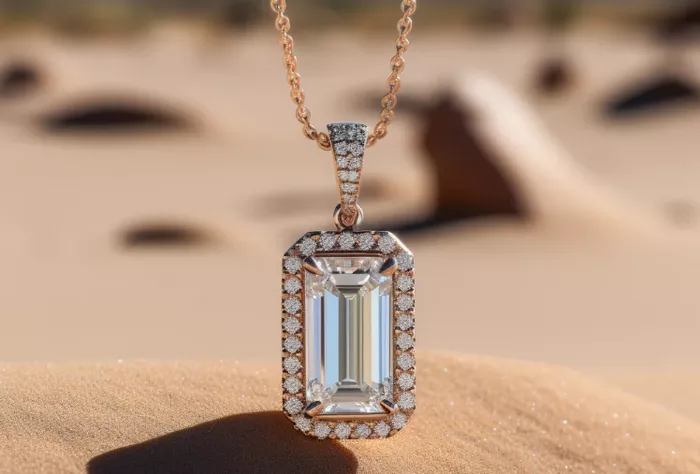Creating a diamond pendant is a meticulous blend of artistry, precision, and craftsmanship that allows jewelry enthusiasts and professionals alike to transform raw materials into stunning wearable art. This comprehensive guide will take you through every step of the process, from selecting the finest diamonds to mastering intricate setting techniques, ensuring that your diamond pendant reflects both beauty and technical mastery.
Introduction to Diamond Pendants
Diamond pendants are renowned for their timeless elegance and ability to add a touch of luxury to any ensemble. Whether it’s a simple solitaire pendant or a complex design adorned with multiple diamonds, each piece represents a blend of creativity and technical skill. Crafting a diamond pendant involves several stages of meticulous work, from initial design conception to final polishing and inspection.
Understanding Diamonds: Quality and Selection
Before embarking on the crafting journey, it’s essential to grasp the fundamentals of diamonds. Factors such as cut, clarity, color, and carat weight determine the quality and value of a diamond. Begin by selecting diamonds that not only meet the desired aesthetic but also align with your craftsmanship goals and budget. Certified diamonds provide assurance of authenticity and quality, essential considerations for both makers and wearers.
Designing Your Diamond Pendant
Every diamond pendant begins with a vision—a concept that guides the entire crafting process. Whether drawing inspiration from classic designs or embracing contemporary trends, the design phase sets the foundation for the pendant’s aesthetics and functionality. Utilize sketching techniques or computer-aided design (CAD) software to visualize the pendant’s shape, size, and diamond arrangement. Consider factors such as metal type (gold, platinum, etc.), setting style (prong, bezel, pave), and any additional gemstone accents that may enhance the pendant’s allure and appeal.
Step-by-Step Crafting Process
1. Material Preparation
Gathering Tools and Materials: Begin by assembling essential tools and materials, including tweezers, pliers, a jewelers’ saw, and a microscope for precision work. A clean, organized workspace minimizes the risk of diamond loss or damage during the crafting process.
Metal Selection: Choose a metal alloy that complements the diamonds and aligns with the wearer’s preferences. Each metal type (gold, white gold, platinum) offers unique properties in terms of durability, color, and overall aesthetic appeal.
See Also: What is a Good Weight for a Pendant: What You Need to Know
2. Diamond Setting Techniques
Setting the Main Diamond: Initiate the crafting process by securing the central diamond (if employing a solitaire design) using your chosen setting technique (e.g., prong, bezel, or channel setting). Ensure the diamond is firmly secured and aligned precisely according to the pendant’s design specifications.
Incorporating Accent Diamonds: Integrate additional diamonds or gemstones to enhance the pendant’s visual appeal. Utilize precise measurements and placement techniques to maintain symmetry and aesthetic balance throughout the crafting process.
3. Creating the Pendant Structure
Metal Fabrication: Begin shaping the metal according to your predetermined design specifications. This may involve cutting, bending, and soldering the metal to achieve the desired form and structural integrity of the pendant.
Embellishments and Enhancements: Incorporate any additional design elements or embellishments, such as intricate patterns or textures, to further enhance the pendant’s overall aesthetic appeal and uniqueness.
4. Finishing Touches
Polishing and Refining: Apply meticulous polishing techniques to the pendant’s surface to achieve a flawless, reflective finish. Utilize polishing compounds and soft cloths to remove any surface imperfections or marks, ensuring the pendant achieves its intended brilliance and allure.
Quality Assurance: Conduct a comprehensive inspection of the completed pendant to verify the secure setting of all diamonds and gemstones. Address any final adjustments or refinements necessary to ensure the pendant meets your exacting standards of craftsmanship and quality.
Conclusion
Crafting a diamond pendant is both an art form and a technical endeavor that demands dedication, skill, and a keen eye for detail. By following the detailed steps outlined in this comprehensive guide—from initial diamond selection to final finishing touches—you have the opportunity to create exquisite pieces of jewelry that captivate with their beauty and craftsmanship. Whether crafting for personal enjoyment or professional pursuit, the process of making diamond pendants offers limitless possibilities for creative expression and artistic fulfillment.


